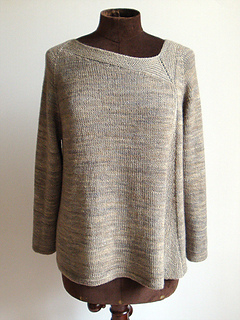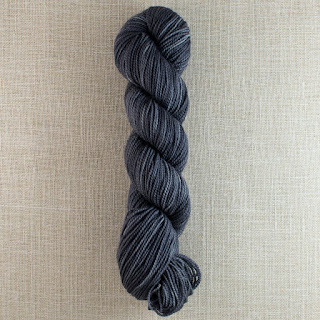You'd have to be really new to this space to not know that my 40s haven't been smooth sailing on the health front. Add to that my family history, namely triple-negative (non-hormonally receptive) breast cancer, and one doesn't even need my natural propensity for hypchondria to feel somewhat concerned about what may be around the corner.
But here's the thing: Everyone's health is a crap shoot. There are those that have never encountered one medical misery in their lives, who end up being felled by some mystery ailment (or a streetcar) in very short order. I know, not up-beat reading, but it's true. You live only in this moment and, on some level, that is tremendously liberating.
If there's one thing this decade has taught me it's not to count my chickens.
Just yesterday, I was sitting on the (glorious) patio of my (other) neighbourhood local, which we call "crappy place", cuz really, the food is only tolerable for the atmosphere, and I was reminded of how, last summer, my tailbone was a jumble of terrible discomfort. I couldn't sit down for months without feeling such pain - and terrified. What did it mean, I ruminated endlessly (cuz that's what I do)? It pretty well tanked my last-summer, stupidly expensive Canadian vacation. But there I was, yesterday, sitting for hours (the service is one of the things that leads us to call it crappy place), endlessly joyful that my ass was comfy on a metal chair. Half the time, life is just perspective. And the other half the time, I suggest simply waiting it out.
Where is this cheerful post going? Well, on to genetic testing, natch. What's an obsessive-compulsive ruminator to do, if not to poke at the clasp of Pandora's box. (Does that sound dirty??) Of course, this isn't my first kick at that can. I did
DNAFit last year. Note: I wouldn't recommend that platform though I learned a lot. As far as I can tell, the raw data isn't made available which makes it pretty limited information, in the long run.
What I would recommend is 23andme, now that they've got FDA-approval to release personal info on 12 genetic diseases, numerous other traits (fluffy and other), drug interactions, ancestry info and more.
For example, wanna get that pesky BRCA 1/2 gene mutation info out of the way? You can do it seriously affordably with this test. In truth, I wasn't particularly concerned about most of the diseases for which my genetic predisposition was tested. I sense that this test is best marketed, in its current iteration, for those of Ashkenazi Jewish heritage - a population with some serious and unfortunate genetic propensities, at least according to what I've read.
Of course, the kind of breast cancer I have an unknown, statistical likelihood to encounter, is not tested for at this time...
But here's the thing, I can't help but to consider that, if I'd known 20 years ago about my early-onset osteo-arthritic bones - likely turned-on in childhood - I might have been able to forestall some seriously unpleasant outcomes to date. Maybe not. Maybe I would have been young and stupid and unconcerned. But I doubt it. Knowing what I know now has, bizarrely, improved the quality of my life. It's given me a map, a way forward. And for this I am grateful. Sure, I really wish I weren't managing a potentially serious degenerative condition. But really peeps, there are worse ones out there. To understand even a potential source of my pain has made that pain, when it comes, bearable and (somehow) less frightening.
But I didn't spend 200 bucks CDN (on sale!) to learn about the BRCA gene mutation, which I don't have. Oh no, I did it to learn about a potential propensity for muscular disorders (a thing I am legit concerned about), Parkinson's (my father has a tremor-condition which is not Parkinson's but still concerning), and - you guessed it - Alzheimer's and late onset dementia.
This is the point in this post that you should click off if you don't like reading about dementia. Trigger-alert.
I'm that girl who reads everything about cholesterol, the APOE gene and statins. Note: Do your fucking research peeps, before you ever go on a statin drug. Cuz it's possible that your high cholesterol levels, if you have the variant of the APOE gene most associated with Alzheimers (that would be the APOE4), may act as a protective factor. Peeps with the APOE4 variant may have super-high blood lipid levels, as a protective mechanism, because those peeps don't metabolize cholesterol (gold, by the body's standard) particularly well in the brain. Look, I'm no scientist or doctor, but anyone on a statin should be seriously clear about the potential impacts - particularly as new research seems to be showing that they don't do much to prevent death.
At any rate, I'm fascinated by dementia and the genes that predict it, as many of us are. My grandmother, now 96, was sharp as a tack until she went on statins a couple of years ago. Now she's a shell. Sure, it's possible one's going to hit the wall at some point - and mid-90s seems to be as good a time as any - but it was strange how that happened (and how anecdotally causal it seems).
Y'all may know that I am rather attached to my ability to problem-solve and my general cognitive well-being. Who isn't? Really, I was secretly hoping to find I had 2 copies of the APOE2 variant, the one that's so protective that they inject mice with it to cure them of induced-dementia. Note: This double variant may come with its own issue of the cardiac variety. Genes, peeps, they're so fussy.
To break it down, and I won't get too sciency cuz I can't be bothered to go back into the program to re-read all of the stats and I'm not a scientist, as we've established, about 1 per cent of peeps get 2 copies of APOE2 and they have a lifelong likelihood of 0.6 per cent of getting Alzheimers. Woohoo for them! Most of us fall into the APOE3 category (@60%) and this is the default, having 2 copies of that variant. Those with 2 copies are not considered to be at genetic risk for Alzheimers. Then there's some subset of the population (2% of Euro ancestry? can't remember) that has 2 copies of the APOE4. Effectively you can have the following allele options: 2-2, 2-3, 3-3, 3-4, 2-4, 4-4. No question, it's not optimal to have any 4s. But if you're going to have any 4s, it's better to have only one. I'm not going to sugar-coat this, if you have one variant of the 4, your likelihood of getting Alzheimer's is 22-35% by age 85. If you have 2, that stat goes up to 50-68%.
Let's detour for a minute. Let's talk about how, it really doesn't matter what your gene profile says (on some level) because your lifestyle, your epigenetics, are going to have a lot to say about what ends up happening to you as you age. This is why I get up every morning with manufactured confidence that my bones are going to work with me, and not against me, for the next 50-odd years.
Moreover, most people who currently have Alzheimers don't have the 4 allele! Remember, most of the population doesn't carry it. Lifestyle really is key, it would appear, or only those carrying the 3-4 or 4-4 combo would be managing this terrible illness.
Let's also consider - on the topic of dementia specifically - that there has never been so much funding poured into any illness because it's becoming so fucking epidemic that there's no ignoring it. Sure, I suspect that diet is a massive contributing factor - yet another reason why determining one's genetic propensity is useful, because then you can knowingly alter how you eat (if theoretically knowing that the Standard American Diet is going to kill you isn't enough). My point: It's never been a better time to be predisposed to getting dementia, even as there's never a good time. They're going to have some cures within the next 5 years, I predict.
So how did I fare? I'm very grateful to be in the largest cohort for those of Euro ancestry: APOE(3-3). Let's face it, this is your likelihood too, regardless of your heritage. Only 1 per cent of peeps are practically immune and only 2 per cent of peeps are seriously, genetically predisposed. @20% of people, across heritages, have that 3-4 variant, which isn't optimal but isn't as concerning as the 4-4.
You may not want to know. I wondered if I would. I took the test considering that I might never read the results. That lasted all of 5 minutes because, in my domain, knowledge is power. Something's going to kill us all and, IMO, our responsibility as people is to live as well as we can until we can't any longer. Avoiding the facts doesn't change them.
What would I have done had I discovered I was in that potentially unfortunate 2 - 20 per cent? Um, I would have researched the SHIT out it. Frankly, I've been doing that for a couple of years, so I'm pretty sure I would have done what I've more or less done already - got rid of most sugar, grains, bad fats, junk food, cut down on booze a lot and upped the fat content I eat dramatically. I'd prob have gone even more "healthy fat" keto than I've already gone - and I'm pretty far gone (in case you see the glossy quality of everything I eat). Strange how this seems to be the answer to improving numerous conditions, conditions that were nowhere near as prevalent before Big Sugar addicted so many (and made the idea of fat so fear-causing). Yes, I realize I sound like a conspiracy theorist.
If you're predisposed to dementia, it's possible that your brain doesn't metabolize cholesterol optimally. Cholesterol is not evil. It's your mind's fuel and it makes you healthy - cognitively and otherwise. I'm not going to devolve into the small category of people who really need to worry about it; the majority thrive on good fat. Anyone with a mood disorder or epilepsy can corroborate this. I'm also not going to get preachy. Do you research. Make your own choices. Be happy having made them.
So that's today's tale. But I wanna know: Have you done this test (or similar medical genetic testing)? What's your predisposition and how do you feel about it? For those who haven't tested, are you worried? Blase? What do you wish you could be tested for (presuming it's not available currently)? Please, let's talk!
















